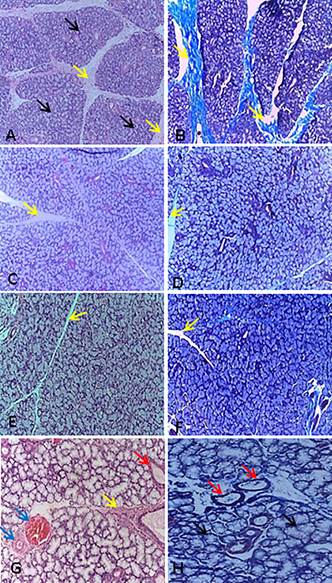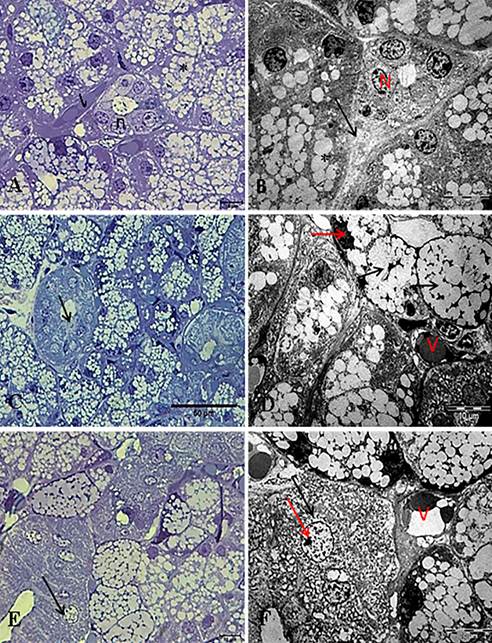Abstract:
Studies on wild animal morphology serve as theoretical basis for the management and conservation of different species, because they provide necessary information for measures to keep these animals in captivity, in their natural habitat or even to reintroduce them into their original habitat. Studies about the morphology of the red-rumped agouti, Dasyprocta leporina, approach the various organic systems, but not a single study refers to topography and structure arrangement of their salivary glands. Thus, this paper aimed to gross and microscopic description of the larger salivary glands of red-rumped agouti. Ten adult D. leporina were used to study the macroscopic aspect of the glands, as well as the microscopic aspects with light microscopy, scanning and transmission electronic microscopy. Four larger salivary glands were identified: parotid glands, mandibular glands, zygomatic glands and sublingual glands. The tubuloacinar glands contained in their parenchyma ducts of extremely varied sizes. With exception of the strictly serous parotid glands, the others were mixed, and only the mandibular glands had granulous ducts. The red-rumped agouti with four pairs of larger salivary glands may be a model for studies concerning the anatomical changes in rodents for adaptation to various habitats.
Index Terms:
Salivary glands; rodent; red-rumped agouti; Dasyprocta aguti; macro and microscopy

 Thumbnail
Thumbnail
 Thumbnail
Thumbnail
 Thumbnail
Thumbnail
 Thumbnail
Thumbnail
 Thumbnail
Thumbnail
 Thumbnail
Thumbnail
 Thumbnail
Thumbnail






